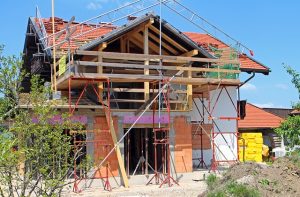There’s no better way to see in a new year than with a salutory reminder of a common mistake. I’d prefer to offer some postitive news or comment, but in this case the issue is fundamental and getting it wrong can cost property developers a lot of money.
I’ve written about this subject many times, but it is one of those issues that comes back to haunt property dvelopers and cane mean the difference between making a loss or a profit on any particular development. In one case, a developer converted an old residential home into apartments. The construction work qualified for the 5%. The developer – advised by his accountant – claimed the VAT on his VAT return. HMRC reviewed the claim (over £80k and more to come) and refused to pay, because the sale of the long leases in the converted apartments was VAT exempt.
By that stage, I could do nothing to help. The rules are quite clear; just because a conversion qualifies for the 5% reduced rate does NOT mean that the developer can claim the VAT when selling the freehold or long lease of the property. As I’ve explained below, the issues are quite distindt.
The difference between the 2 MATTERS a lot because the entire profit on a development can be wiped out simply because the developer wasn’t aware that there is a difference.
So what is a conversion then?
There are 2 distinct uses of the word “conversion” for VAT purposes. The first relates to the VAT liablity of construction work to convert an existing residential property to a different residential use. For example, the crsion of a student hostel into self-contained apartments. This is explained in HMRC VAT Notice 708, section 7 https://tinyurl.com/krr496mh. This applies to the conversion of the convent to create single household dwellings. Therefore the construction services should qualify for the 5% rate.
The other use of the word “conversion” is in respect of the VAT liability of the sale of a major interest (freehold or lease exceeding 21 years) o

f “non-residential conversions”. Normally, the sale or lease of residential property is VAT exempt, which means that the owner/seller of the property cannot claim VAT on related costs; e.g. VAT on residential repairs or maintenance.
However the sale of a major interest in a “non-residential conversion” can qualify for the zero-rate. This is important as it can enable the developer to claim VAT on conversion costs.
It is very important to understand the distinction between the two uses of the word. Just because a conversion qualifies for the 5% rate on the construction work does NOT mean that the sale of a major interest in the property qualifies for the zero-rate. However many developers are not aware of the distinction and end up with unexpected VAT costs at the end of the development, when HMRC reviews their claim for the VAT incurred on the conversion work.
As explained above, the 5% rate for construction services applies if the work converts a property used for one type of residential purposes – such as the convent, which falls within the definition of “relevant residential purposes” (see definition in VAT Notice 708, section 14.6.1 (f) specifically includes convents in this category https://tinyurl.com/554tu2dk) and is converted to another type of residential property, such as a single household dwelling.
However the definition for “non-residential conversion” refers to a non-residential property has been converted to residential use and has never, at least in the past 10 years, been used as a residence. See VAT Notice 708,section 5 for detailed criteria https://tinyurl.com/w5pagxm. The term “used as a residence” often precludes mixed use properties from qualifying as a “non-residential conversion”. A good example would be a public house where the landlord and his/her family have used the upper floor as their residence, even though the property is not a self-contained dwelling.
